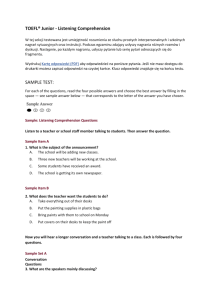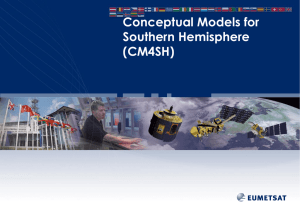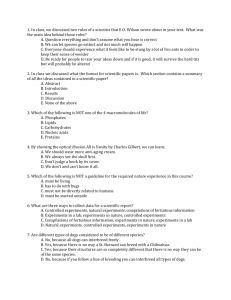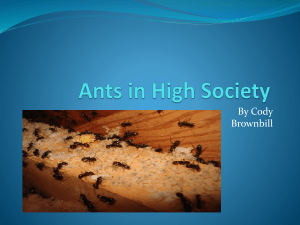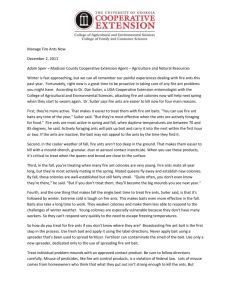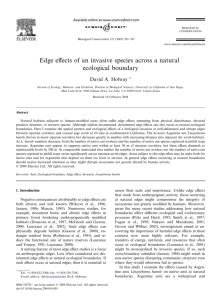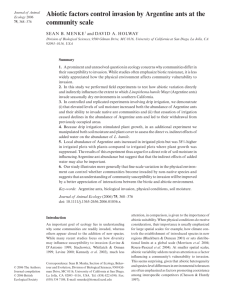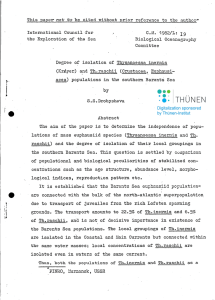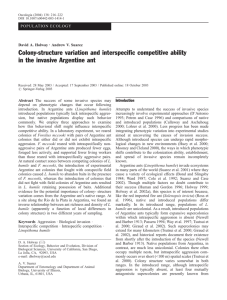effects of the invasive argentine ant on rodents and plant species
advertisement
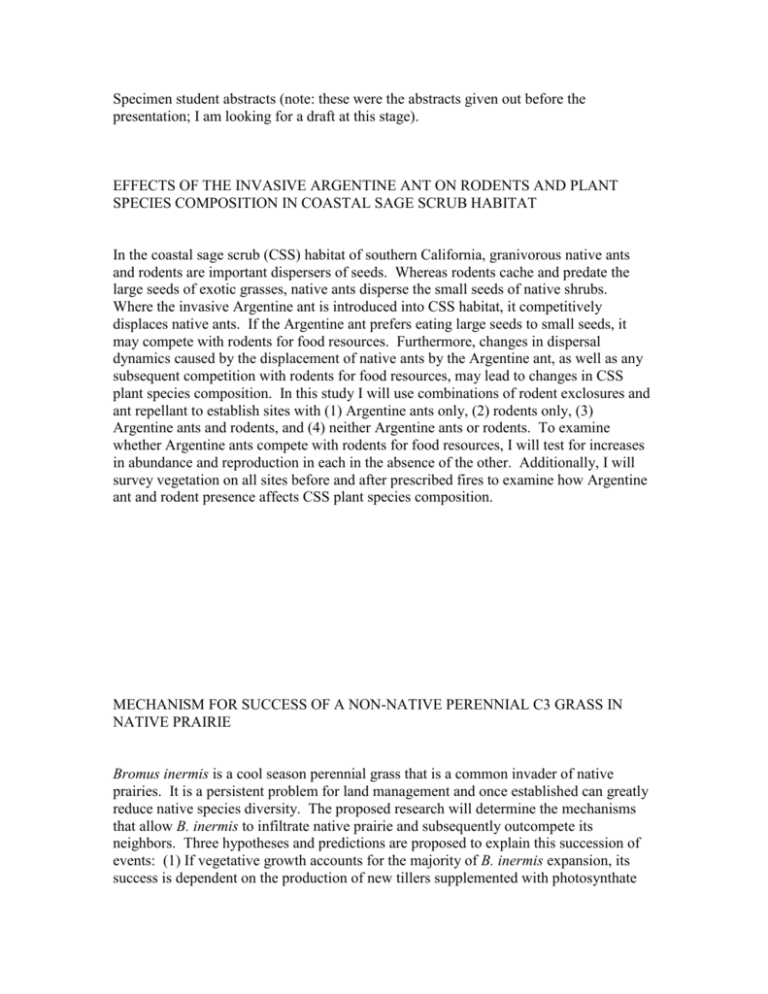
Specimen student abstracts (note: these were the abstracts given out before the presentation; I am looking for a draft at this stage). EFFECTS OF THE INVASIVE ARGENTINE ANT ON RODENTS AND PLANT SPECIES COMPOSITION IN COASTAL SAGE SCRUB HABITAT In the coastal sage scrub (CSS) habitat of southern California, granivorous native ants and rodents are important dispersers of seeds. Whereas rodents cache and predate the large seeds of exotic grasses, native ants disperse the small seeds of native shrubs. Where the invasive Argentine ant is introduced into CSS habitat, it competitively displaces native ants. If the Argentine ant prefers eating large seeds to small seeds, it may compete with rodents for food resources. Furthermore, changes in dispersal dynamics caused by the displacement of native ants by the Argentine ant, as well as any subsequent competition with rodents for food resources, may lead to changes in CSS plant species composition. In this study I will use combinations of rodent exclosures and ant repellant to establish sites with (1) Argentine ants only, (2) rodents only, (3) Argentine ants and rodents, and (4) neither Argentine ants or rodents. To examine whether Argentine ants compete with rodents for food resources, I will test for increases in abundance and reproduction in each in the absence of the other. Additionally, I will survey vegetation on all sites before and after prescribed fires to examine how Argentine ant and rodent presence affects CSS plant species composition. MECHANISM FOR SUCCESS OF A NON-NATIVE PERENNIAL C3 GRASS IN NATIVE PRAIRIE Bromus inermis is a cool season perennial grass that is a common invader of native prairies. It is a persistent problem for land management and once established can greatly reduce native species diversity. The proposed research will determine the mechanisms that allow B. inermis to infiltrate native prairie and subsequently outcompete its neighbors. Three hypotheses and predictions are proposed to explain this succession of events: (1) If vegetative growth accounts for the majority of B. inermis expansion, its success is dependent on the production of new tillers supplemented with photosynthate from established plants. To determine which reproductive mode accounts for the majority of the expansion, belowground barriers will be placed along leading edges of B. inermis invasion to stop the advance of tillers, but allow for seed dispersal. (2) If B. inermis can produce enough shade to disrupt natural photosynthesis, then seeds and seedlings under a canopy of B. inermis will have a low likelihood of recruitment. This same prediction holds true for existing native vegetation, resulting in lower biomass in the presence of B. inermis. The effects of shading and aboveground biomass on native species germination and growth will be tested in experiments using artificial shade structures and applications of B. inermis leaf litter. A field complement to this will be conducted in native prairies being taken over by B. inermis where thatch will be removed to test for growth responses. (3) Finally, if this cool season invader can successfully tie up limiting nutrients in its aboveground biomass, then a reduced amount of nutrients would be available to warm season grasses. The change in microhabitat availability of nutrients will be assessed by comparing nutrients inside and outside the leading edge of B. inermis invasions. Sampling will occur during multiple seasons to coincide with warm and cool season growth periods.

